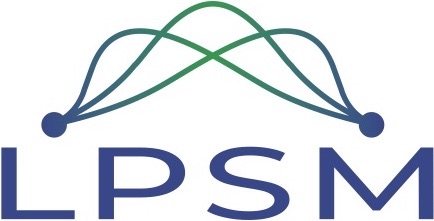I am broadly interested in probability theory and mathematical physics. I specialise in the analysis of lattice models, which is a branch of statistical mechanics. My recent work focusses on the the study of discrete height functions in two dimensions. This branch of research finds applications in the XY model and its Berezinskii-Kosterlitz-Thouless phase transition, the six-vertex model, and the random-cluster model (including the percolation model).
News and announcements
-
Inhomogeneous Random Systems conference at IHP (Paris)
27-28 January 2026Two-day conference organised by Christian Maes, Kirone Mallick, and Ellen Saada. I am moderating the first day. Free and open to everyone, please email inter@math.cnrs.fr to register.
-
Meeting Geometric Methods in Percolation and Spin Models at ICTS (Bengaluru, India)
2-13 March 2026Subhajit Goswami, Trishen Gunaratnam, and I are organising a spring school and workshop on Geometric Methods in Percolation and Spin Models at the ICTS in Bengaluru, India. See the website for more details.
-
Annoucement “GFF convergence for the six-vertex model”
Hugo Duminil-Copin, Ioan Manolescu, Karol Kozlowski, and I are currently finishing a manuscript on convergence to the Gaussian free field of the six-vertex model with Delta between -1 and -1/2. Its preprint will appear online in early 2026.
Early 2026 -
Workshop in Mathematical Physics at Les Diablerets, Switzerland
I will be attending the 2026 workshop in mathematical physics at Les Diablerets, Switzerland.
8-13 February 2026
Cours Peccot
I recently taught a Cours Peccot at Collège de France (see the videos below).
Recent talks
Workshop on Topological Phase Transition and Localization of Random Fields (Dec 2025, Center for Mathematical Modeling, University of Chile)
Probability seminar, University of Bath (Sep 2025, University of Bath)
Trimester Program: Probabilistic methods in quantum field theory (Jul 2025, Hausdorff Research Institute for Mathematics, Bonn)
Probability Seminar (Jun 2025, Beijing International Center for Mathematical Research)
Workshop on mathematical physics (Feb 2025, SwissMAP Research Station)
Workshop on statistical mechanics at UNIGE (Jan 2025, University of Geneva)
Mini-Workshop: Critical Phenomena of the XY Model (Nov 2024, Oberwolfach)
Bangalore Probability Seminar (Oct 2024, Online)
Séminaire de probabilités (Oct 2024, Aix Marseille Université)
International Congress in Mathematical Physics (Jul 2024, University of Strasbourg)
Contact details
- Visiting address
-
Office 16-26.108
LPSM, Sorbonne Université
Campus Pierre et Marie Curie
4, place Jussieu
75005 Paris
France - Mail address
-
LPSM, Sorbonne Université
Campus Pierre et Marie Curie
Case courrier 158
4, place Jussieu
75252 Paris CEDEX 05
France - Email address
- plammers@lpsm.paris



